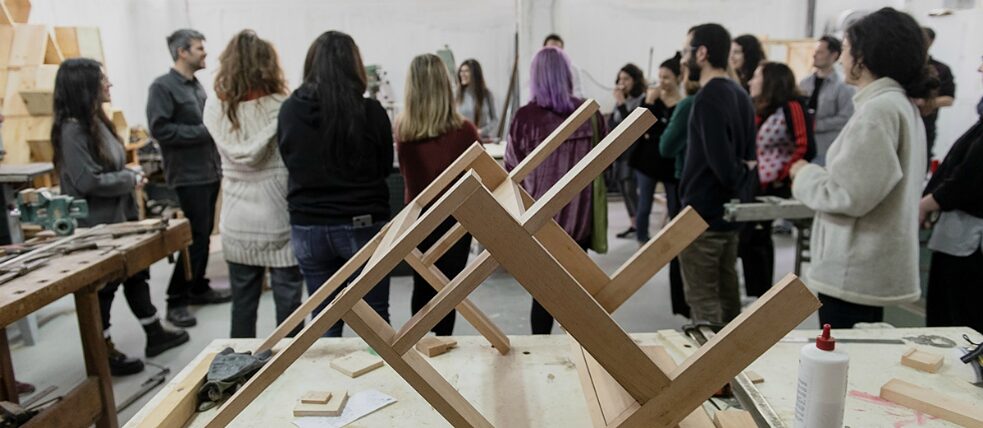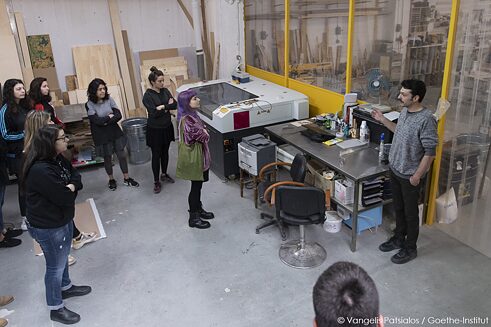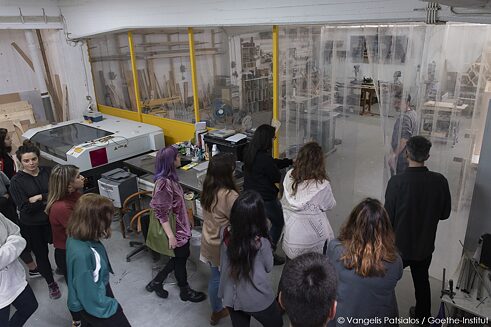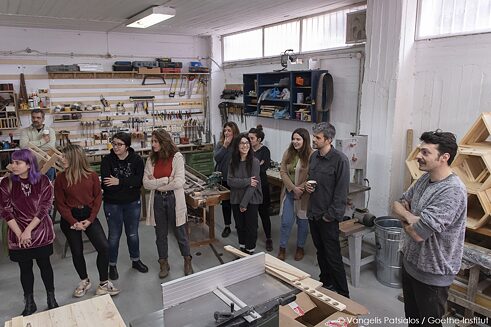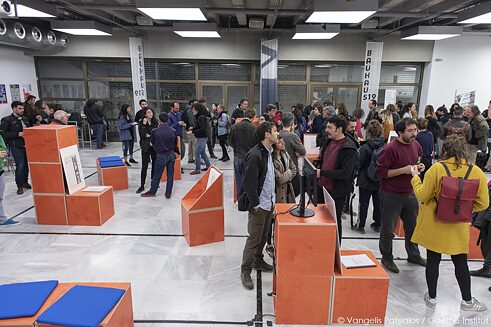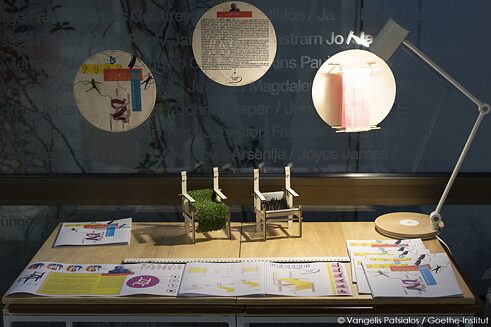Workshop and panel discussion
Bauhaus meets commons
The Bauhaus ideas about making affordable consumer goods widely accessible were central to the process. Questions of ergonomics and use were much more important than saleability. Open access to the plans mean that the chairs can be replicated, for example in other maker spaces.The “Bauhaus Meets Commons” events asked what the Bauhaus – one hundred years after its founding – would have to say to the Commons movement. Like the Bauhaus thinkers, the commons – or the “sharing economy” – creates an alternative to the established economic model and explores how we actually want to live, create, design and produce.
By Dimitris Soudias
Starting point: Bauhaus set out to produce affordable consumer goods through means including rationalisation processes. Commoners seek to move beyond private ownership of goods and services and make them accessible to all instead. “Bauhaus Meets Commons” explored the common ground between the two.
Objective: Together with a civil society actor from the field of commoning (LUDD Open Lab), participants created an object inspired by the Bauhaus (specifically by Breuer’s slatted chair).The object was conceived and designed as a common, the creative process guided by the logic of commoning.
Workshop Part I: Introduction to the commons and commoning, and to the Bauhaus and its ideas of community and rationalisation
- Open call in collaboration with LUDD Open Lab: As with the Bauhaus itself, the aim was to overcome the division between arts and crafts
- Introductory discussion presenting personal ideas, ideas and concepts for the project, thoughts about how the process can function as commoning
- Division into groups to distribute the different participants’ backgrounds:
- Different career backgrounds (architects, sculptors, product designers, engineers, carpenters)
- Age and gender balance in groups
- Group discussions about the project and process required to produce the chair as a common
- Process is informed by commoning: discussions are consensus-driven, democratic, horizontal and anti-authoritarian
- Commoning requires recognition and negotiation of the potential for conflict in the search for consensus
The Common is only as good as the process that created it.
Dimitris Soudias
Workshop Part II: Designing the chairs
- Collective design of chairs, software-supported
- Collective production of chairs
- Testing and revision of chairs
- Licensing of chairs as Creative Commons
Part III: Final meeting
To conclude “Bauhaus Meets Commons”, the Goethe-Institut Athens invited workshop participants to present their finished chairs and discuss them with an interested audience.The final meeting began with thought-provoking invited contributions. First, the colleagues from LUDD Open Lab described the experimental approach of the workshop and the shared experience of informal collective creation.
This was followed by a practice-oriented talk by the Berlin-based architect Florian Kohl on the topic of “Come On Architecture, Make Space More Common”. Kohl, Studio Daniel Libeskind, showed how architecture can create “commons spaces”, citing examples such as the Prinzessinengärten community garden in Berlin and the concept of the housing collective.
Finally, Prof. Stavros Stavrides of the National Technical University of Athens gave a conceptual talk entitled “Bauhaus and the Architecture of the Commons”. Stavrides presented an innovative reading of the Bauhaus, in which he reflected the history of its ideas through the prism of the commons. Taking Oskar Schlemmer, Walter Gropius, and in particular Hannes Meyer as his examples, Stavrides sketched out the public-spirited approaches of the Bauhaus.
Finally, in the panel discussion, the contributors addressed the question of what the Bauhaus and the commons can learn from one another, in the context of technological innovation, economic inequality, competition, and social problems. Rather than finding answers, this approach aired new questions to initiate a discussion on alternative ways of living together.
Marcel Breuer’s chair is both an everyday item (a seat) and an artefact that emerged from a knowledge process. The questions raised by the workshop participants included:
- How can we apply the teachings of the Bauhaus (about colour, form, material etc.) to the devices in a maker space?
- Which materials combine environmental sustainability with low production costs?
- How can the chair be designed to make it easy to replicate (IKEA principle, whose roots are ultimately found in the Bauhaus)?
- What is ergonomically and orthopedically healthy about this chair?
- What role do everyday objects play in our lives?
- How can we ensure that they are widely available?
Relevant findings for a commoning guide
| Collective process How is the process organised? |
||
|
||
| Sustainable use and fair access How can we ensure fair and sustainable access to the resource/service/process? |
||
|
||
| For the common good How can we ensure benefit for the common good? |
||
|
||
